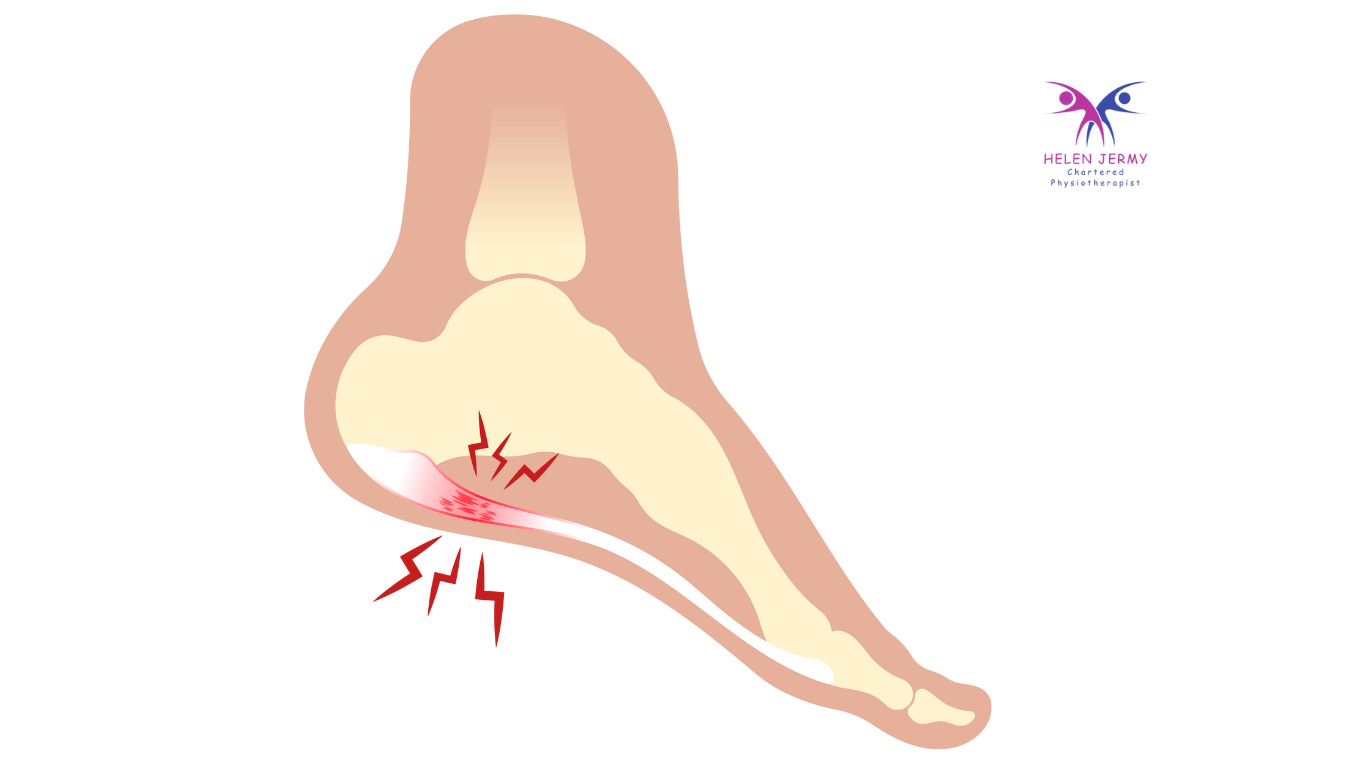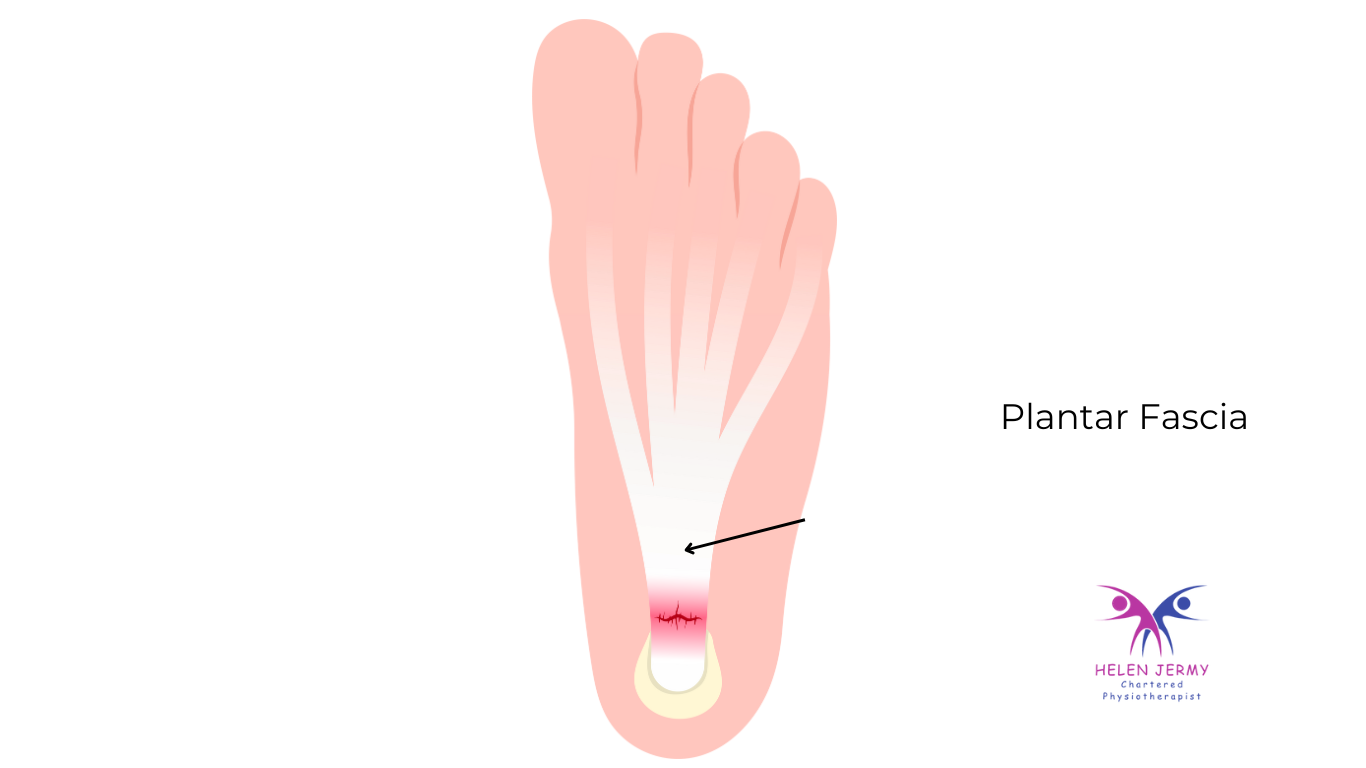Plantar Fasciitis
Plantar Fasciitis.
With the onset of (hopefully) warmer weather many of us will be casting off our heeled winter boots and shoes in favour of lighter weight, cooler flat shoes or flip flops, or even bare feet. However this may lead to the development of pain in your heel - commonly referred to as Plantar Fasciitis, but more recently the term plantarfasciopathy is being used.

Plantar fasciitis is a condition that is caused when the load that the plantar fascia- the tissue connecting your heel bone to your toes, has to work against is too high, causing it to develop micro-tears and possibly inflammation.
The pain may come suddenly or over a period of time.
The typical symptoms of plantar fasciitis include:
- Pain and stiffness in the heel and/or inside arch of the foot
- Pain when you put your foot down and walk first thing in the morning.
- Pain that decreases with movement, but increases if you spend too much time on your feet.
- Increased pain when you walk after sitting still for a while.
- When you press under your foot, you find a painful spot to the inside of the heel which may extend into the arch of the foot

Long periods of time in bare feet, flip-flops or flat shoes can cause plantar faciitis due to :
- Lack of Arch Support: Flip-flops and most flat shoes lack proper arch support. When you walk, run, or stand, your arches absorb a lot of impact. Without proper support, your arches can collapse, leading to strain on the plantar fascia.
- Minimal Cushioning: Flip-flops and many flat shoes have minimal cushioning. This means they don’t absorb much of the shock from walking or standing, putting extra stress on your feet.
- Limited Stability: Flip-flops especially offer very little stability. Your foot has to work harder to grip the sole, which can lead to imbalances in the foot’s mechanics, potentially causing strain on the plantar fascia.
- Toe Gripping: When you wear flip-flops, you often grip the sole with your toes to keep them on. This can create tension and strain on the plantar fascia, exacerbating any existing issues.
- Sudden stretch on tight calf & leg muscles: Can create tension and strain on the plantar fascia
- Weight gain may also contribute to the development of Plantar Fasciitis due to the increased force transmitted though your feet creating more load on the Plantar Fascia as it supports the arch of your foot.
- A sudden increase in the amount of running, or wearing appropriate shoes when running for a train or bus.
- Walking or running on hard surfaces causes an increase loading to the plantar fascia, as softer surfaces absorb more of the shock created lessening the load on the plantar fascia
To prevent plantar fasciitis, it’s essential to wear shoes with good arch support and cushioning. If you prefer wearing flip-flops or flat shoes, look for ones with built-in arch support and cushioned soles. Additionally, it’s crucial to regularly stretch your calves and feet, maintain a healthy weight, and avoid walking barefoot on hard surfaces for long periods.
If you’re already experiencing symptoms of plantar fasciitis, consult a healthcare professional for proper diagnosis and treatment recommendations.